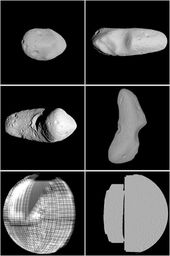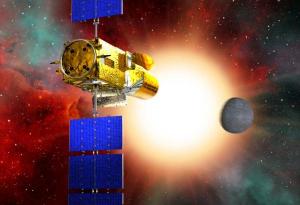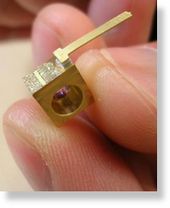
© Robert W. GaskellA model of the asteroid Eros constructed from images from the NEAR spacecraft and, at far left, the beginnings of a topographic map of Mercury. The Eros model is made from 12,000 overlay “maplets” of the asteroid. Computer software processes the digital images in groups of 1,000.
Altadena, California - When space engineers made a map of a planet or a distant moon back in the old days, they made an 8-by-10 picture of part of the surface, identified a couple of landmarks - a crater and an outcrop, say - and measured the distance between them with a straightedge and a crayon.
"Then you punched the number into the computer and figured out the latitude and longitude," recalled Robert W. Gaskell, a planet-mapping expert. The result was two-dimensional, with only hints of surface texture or complexity.
No more. With modern computers, digital photography and laser range-finding, scientists today do a much better job of pinpointing the locations of their spacecraft, picking landing sites and otherwise describing the solar system's extraterrestrial landscapes.



